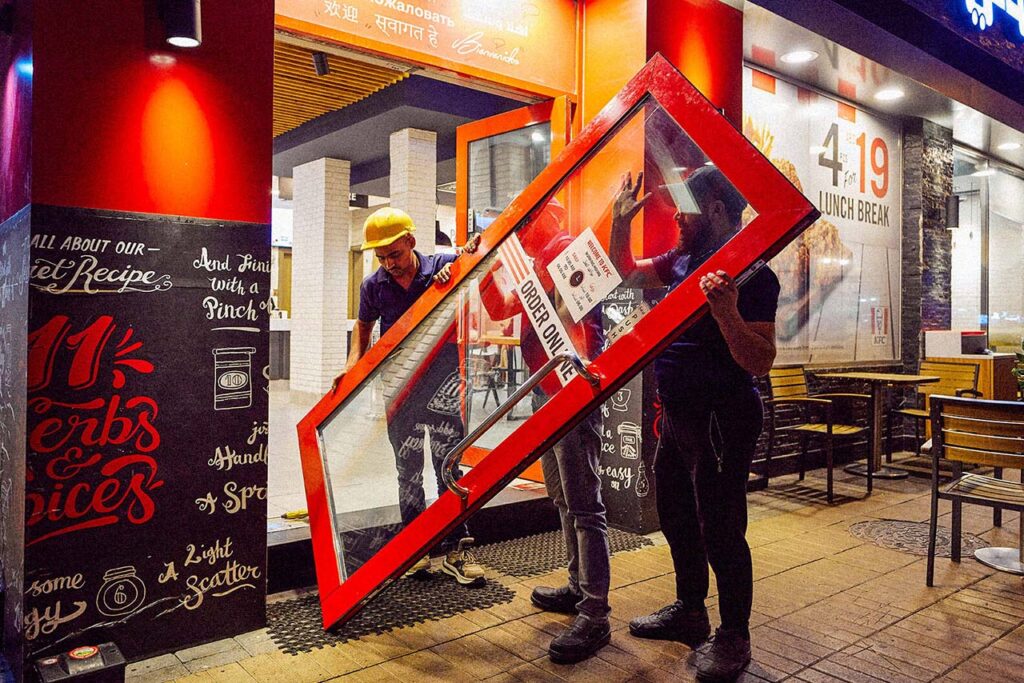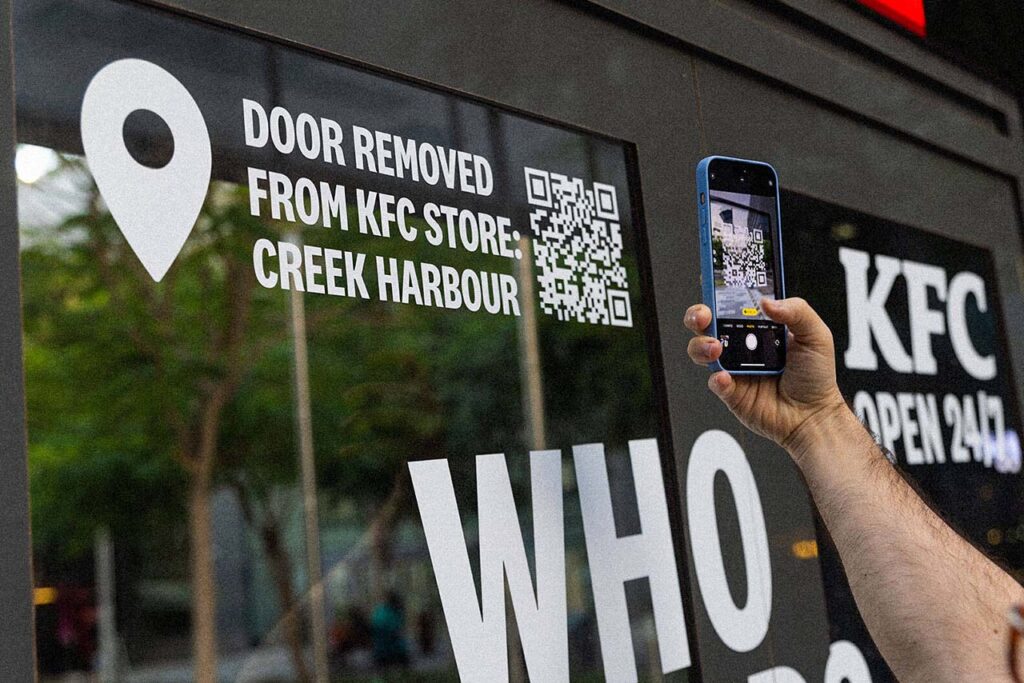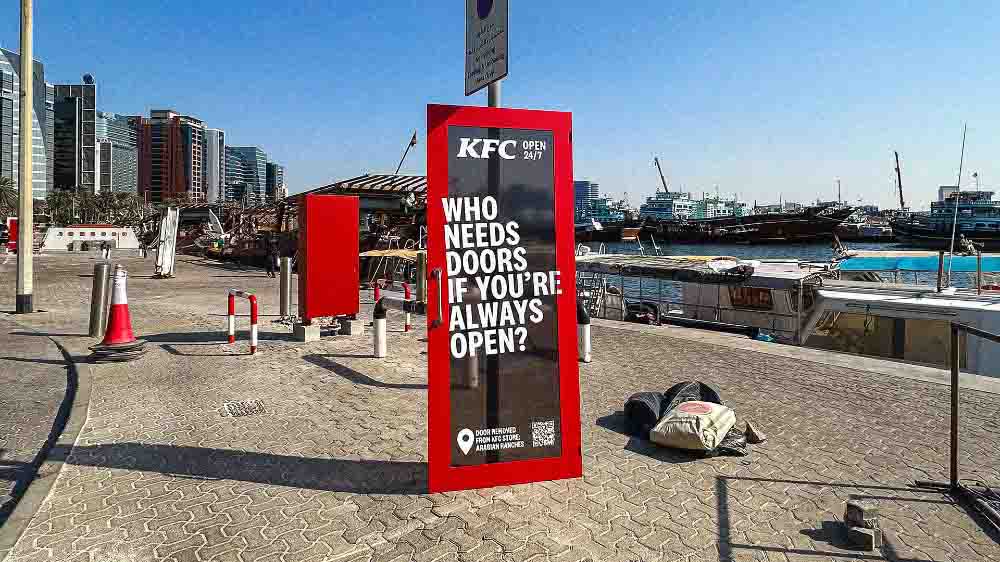In the ever-evolving world of fast food advertising, KFC has once again captured the public’s imagination with its quirky, meme-inspired campaign titled “Who Needs a Door?”. This campaign not only showcases KFC’s knack for humor but also reflects a broader trend in marketing where brands increasingly tap into internet culture to connect with a younger demographic. Here’s an in-depth look at what makes this campaign noteworthy.
The Concept
The “Who Needs a Door?” campaign stems from a now-iconic meme featuring a scene from the 2006 film “Talladega Nights: The Ballad of Ricky Bobby,” where characters discuss a chicken restaurant that’s unique because “they give you a free bucket of chicken if you come in on foot.” In the meme’s punchline, someone quips, “Who needs a door when you have a bucket of chicken?”

KFC capitalized on this humorous exchange by creating a marketing strategy that plays with the idea of not needing doors if you’re drawn in by their irresistible chicken. The campaign was rolled out across multiple platforms, including social media, TV ads, and in-store promotions, featuring various scenarios where doors are humorously unnecessary because of the allure of KFC’s food.
Subscribe our Youtube channel @wiladio for more interesting video about Design, Science, Tech, and Game
Execution Across Media
- Social Media: KFC’s social media channels were flooded with content related to the campaign, from short, snappy videos to interactive posts asking fans to share their own “doorless” stories. Hashtags like #WhoNeedsADoor and #KFC went viral, encouraging user-generated content.
- Television Ads: The TV commercials were a blend of live-action and animation, showing people entering KFC outlets in bizarre, doorless ways, like sliding down poles or rappelling from the ceiling. These ads not only entertained but also underscored the message that KFC’s food is compelling enough to bypass conventional entry methods.
- In-Store Experience: Some KFC locations participated by temporarily removing their doors (with safety measures in place, of course) or placing humorous signs that echoed the campaign’s theme. This real-world tie-in provided an immersive experience for customers, making the campaign memorable.

Impact and Reception
The campaign was met with a mix of amusement and engagement from the public:
- Meme Culture Integration: By leveraging an existing meme, KFC not only garnered attention but also positioned itself as a brand that understands contemporary, internet-driven humor. This connection with meme culture helped in resonating with millennials and Gen Z, demographics known for their love of fast, shareable content.
- Increased Engagement: Metrics like social media engagement, shares, and mentions spiked following the campaign’s launch. It wasn’t just about selling chicken; it was about creating a cultural moment that people wanted to be part of or at least talk about.
- Brand Personality: KFC further solidified its brand personality as fun, irreverent, and slightly offbeat, which differentiates it in the competitive fast-food landscape where personality can be as crucial as the product itself.
Challenges and Considerations
However, not all was smooth sailing:
- Logistical Challenges: The physical removal or alteration of doors in stores, even if temporary, posed logistical and safety issues that required careful planning.
- Cultural Sensitivity: Memes can be hit or miss depending on cultural contexts, and what’s funny in one part of the world might not resonate or could even offend in another. KFC had to navigate these waters carefully.

Conclusion
KFC’s “Who Needs a Door?” campaign is a testament to how brands can use humor and internet culture to break through the noise of traditional advertising. By embracing the absurd and the viral, KFC not only engaged its audience but also created a narrative around its product that was both entertaining and shareable. As marketing continues to evolve, campaigns like these highlight the importance of creativity, cultural awareness, and the power of a good laugh in connecting with consumers.
THE END
Subscribe our Youtube channel @wiladio for more interesting video about Design, Science, Tech, and Game
More design posts: https://wiladio.com/category/design/
Wiladio – A Graphic Design Website. Wiladio is a website focused on delivering the latest news and updates about graphic design and technology.












